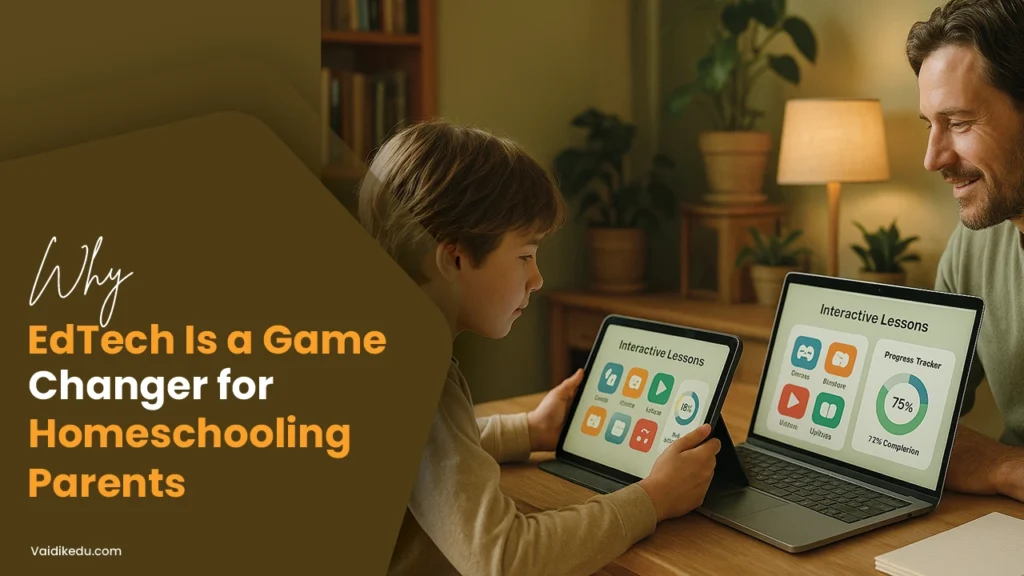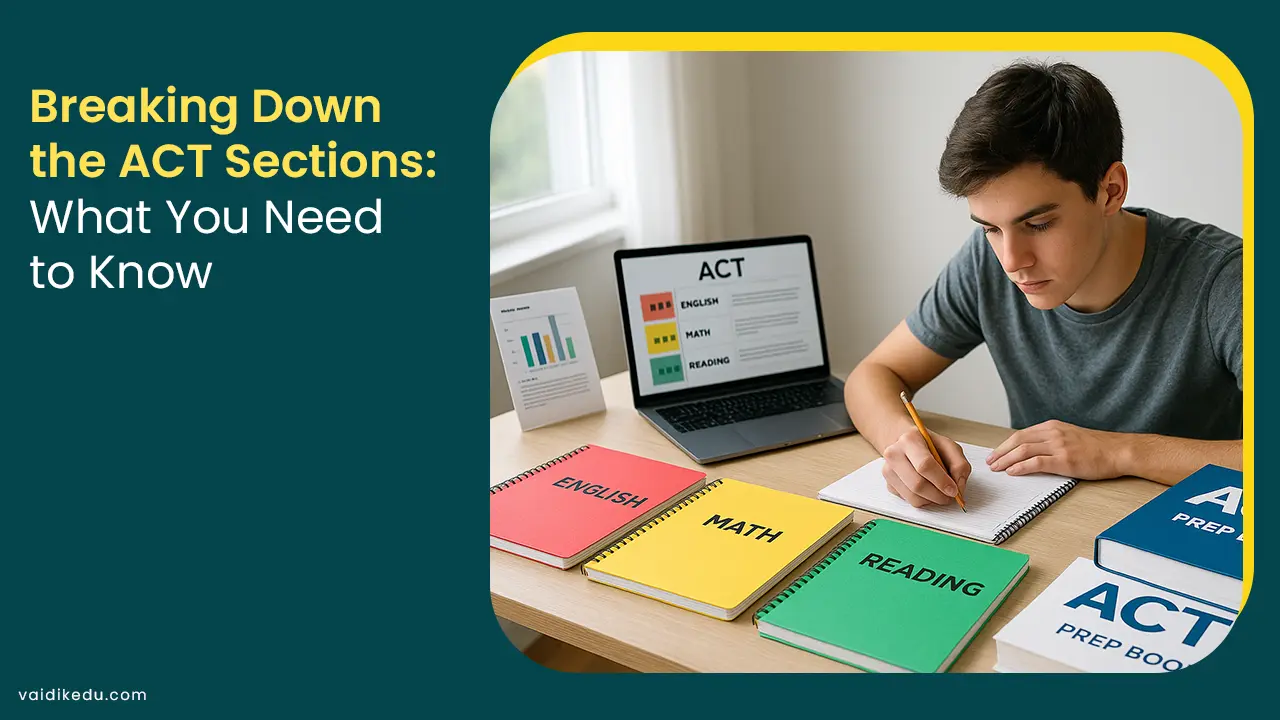The education landscape has changed drastically in the last ten years, mainly due to technology. Among the several sectors that greatly benefited from technological advancement is homeschooling.
While homeschooling was once considered one of the forms of education specialization, there is an emerging trend that comes with the integration of educational technology, commonly abbreviated as EdTech, into a parent’s life. EdTech has made homeschooling more accessible and interactive, changing the face of education for students and parents alike.
This blog will explore how EdTech is revolutionizing homeschooling, the many benefits it offers, and the future of self-directed learning.
Accessibility And Flexibility
The first reason EdTech has revolutionized homeschooling is its ability to make it more accessible.
Whereas the old traditional learning leans largely on books and classrooms, EdTech boasts an endless list of course catalogs, e-versions of books, and engaging multimedia presentable according to different needs and types of learning.
Even more specific high-class learning materials on the web can be accessed through sites like Khan Academy, Coursera, and edX-all of which are free or nearly free. Flexibility is also one of its advantages.
Homeschooling families can create schedules that fit their needs, and online learning tools allow students to progress at their own pace. Whether a student is a whiz in scientific subjects or has a hard time with language arts, adaptive learning platforms such as Prodigy and DreamBox adjust the difficulty level in real-time, providing a personalized educational experience that promotes individual growth.
Interactive Media for Better Comprehension More often than not, traditional means of teaching still rely on text-based content that is not very compelling for students to learn.
Contrastingly, educational technology transforms learning by harnessing multimedia as a tool in the classroom. Videos, animated simulations, or gamified interactive content make sense of complex material and make things more interesting for students.
For example, the Duolingo platform uses gamification to make language learning an enjoyable and competitive activity that encourages regular practice. Another area that is much enhanced through VR and AR technology is experiential learning.
Imagine a student who can roam ancient Egypt on a VR headgear or do a virtual dissection of a frog using an AR application. It is more thoroughly understood and remembered than the conventional forms of learning.
Personalized Learning Paths
Each student has different strengths, weaknesses, and interests. Educational technology enables homeschooling parents to design unique learning plans according to a child’s requirements.
AI-based platforms monitor student performance and offer lessons to fill the gaps. IXL and Smartick tools rely on data analytics to monitor student improvement so that students are provided with targeted instruction where improvements are needed.
Students can also learn topics of special interest that might not be included in a typical curriculum. For instance, from coding classes on platforms like Scratch and Code.org to music lessons on apps like Yousician, the possibilities for individualized learning are endless. This degree of personalization allows students to discover their passions and explore them with confidence.
Collaboration And Socialization Opportunities
Perhaps, it is a notion that homeschooling is a confined space where little social interaction would be possible. However, that is not at all true since EdTech provides ample avenues for collaboration and socialization among peers.
Online forums, virtual classes, and team projects enable communication with students globally, thus strengthening communication and team-building skills. Tools like Zoom and Google Classroom allow real-time interaction with the teacher and the class, allowing a sense of community despite geographical distances.
Thirdly, different EdTech organizations have competitions and events that are intercontinental. For instance, competitions such as Mathletics and Spelling Bees allow students to express themselves through their abilities and engage with others of similar interests; this is the beginning of healthy competition and companionship.
Parent Support And Involvement
EdTech is also playing an important role in increasing the level of parental engagement in the homeschooling process. LMS tools like Canvas and Schoology make parents aware of their child’s learning process instantly through their assignments and performance indicators. Such a degree of transparency helps parents to provide support at the right time and in case of any interventions required.
EdTech sites provide parents with resources and training to make them better educators. Online forums, webinars, and educational guides teach the best ways of teaching, ways to assess children’s learning and access extra learning materials. With this guidance network, a parent becomes capable of becoming confident and effective.
Cost And Quality Accessibility
Some families feel locked out of traditional private education by its very high costs, so homeschooling may be the best option for them. EdTech dramatically cuts the costs of homeschooling since it provides access to a wide wealth of free or low-cost resources. OpenStax and MIT OpenCourseWare, for example, offer high-quality textbooks and course materials at no cost.
Subscription-based platforms will often offer rich curricula at a far lower cost than private tutoring. Families can then invest in niche courses without the usual costs associated with the traditional way of education, which makes high-quality education more accessible to students coming from diverse economic backgrounds.
Learning 21st-Century Skills
In this dynamic world, students need more than academics can provide. Homeschooling students will be better prepared to face the future if they are given these essential 21st-century skills: critical thinking, problem-solving, digital literacy, and self-discipline. Engaging coding platforms, online research resources, and collaborative projects prepare students for both higher education and the job market.
It also gives them a competitive edge early. Students learn how to navigate digital landscapes, use productivity software, and keep up with emerging technologies, skills increasingly in demand across various industries.
Geographic And Physical Challenges
Traditional schooling might not be possible for those families living in remote areas or children facing physical disability. This problem has been addressed through educational technology with a provision for the experience of a classroom right from home.
Virtual schools, online tutoring, and even asynchronous learning platforms remove the burden of traveling, allowing education irrespective of geographical or physical constraints.
This can also assist disabled students by further enriching the learning process. Among such tools are screen readers, speech-to-text applications, and specific learning software, among others, to cater to a wide variety of needs for an inclusive educational environment.
The EdTech impact on homeschooling goes beyond academic teaching to encompass a more holistic approach to student development. For example, mindfulness-based applications and time management applications help students develop emotional resilience and self-regulation skills.
Applications such as Headspace and Calm offer guided meditation sessions to improve mental health, an important aspect of modern education often overlooked.
It also ties the parents through a global homeschooling network where they can share knowledge, wisdom, and a personal experience with one another.
Many online forums, blogs, and social media communities dedicated to technology-influenced homeschooling provide rich information and insights. This shared knowledge empowers parents to make enlightened decisions in terms of curricula, instructional methods, and other technological resources that better suit the individual requirements of the child.
Specialized knowledge and skills will also get democratized. A characteristic feature in platforms like Outschool is the class taught under the watch of real-time teachers; for instance, it would engage students wanting to focus on really technical areas for the discovery of knowing things concerning game designing, astronomy, creative writing among others, which leave space for an exploration from already well-established confines.
The integration of artificial intelligence in EdTech also holds significant promise. Immediate feedback and adapted instruction from AI-powered tutors and chatbots perfectly bridge the knowledge gap. AI-powered tutoring models mirror the most effective personalized tutelage, enabling more students to experience good quality educational assistance.
Finally, EdTechs focus on cybersecurity and digital literacy empowering the learner with the capacity to safely navigate the web world. Resources teaching responsible Internet use and data privacy, including ethical implications of technology, can be tapped by home-schooling parents to produce well-rounded, digital citizens adequately prepared to flourish in a globalized society.
Conclusion
Educational technology has transformed the homeschooling landscape by facilitating easy access, interaction, and personalization of learning. With multimedia resources, adaptive learning systems, opportunities for global collaboration, and cost-effective solutions, EdTech has been able to solve many problems that are inherent in homeschooling. Technological advancement will therefore ensure more novelty in the future for approaches to education, making the journey of both students and their families even richer.
Frequently Asked Questions
EdTech is the use of digital tools and resources combined to improve learning. EdTech involves online courses, educational apps, virtual reality, and many more.
EdTech promotes personalized learning, access to an array of resources, interactive content, and collaborative learning, which improve the effectiveness and engagement of homeschooling.
Many EdTech platforms are offering free or low-cost resources, and subscription-based services are generally more affordable than private schools.
EdTech includes assistive technologies such as screen readers, speech-to-text applications, and specialized software, which adapt to the varying needs of students, thus creating an inclusive learning environment.









